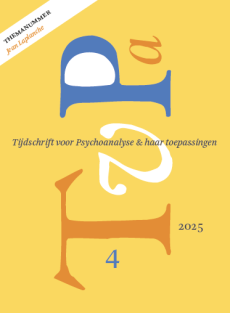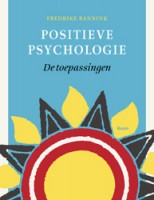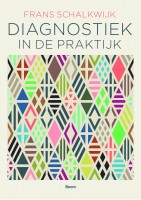Psychotische jongeren en het residentiële behandelteam
Summary
Counter-transference in a residential setting is much more complex than that in treatment of outpatients. Besides the counter-transference of the therapist, there is the counter-transference of the team as well as the interaction between them. Moreover, it is obvious that the counter-transference in a residential setting for children and adolescents concerns not only the individual patient but also his/her parents.
Cases where this complex and many-sided counter-transference has worked counter-therapeutically demonstrate the damage that, if not well understood, it can cause to the patients support systems. This is illustrated by a number of cases which have important indications for therapeutic use of the counter-transference in residential settings.
Literatuur
- Brandell, J. (1992). Preface. In J. Brandell (red.), Countertransference in psychotherapy with children and adolescents. Londen: Hogarth Press.
- De León De Bernardi, B. (2000). The countertransference: a Latin American view. International Journal of Psychoanalysis, 81, 331-351.
- Ekstein, R., Wallerstein, J. & Mandelbaum, A. (1992). Countertransference in the residential treatment of children. In J. Brandell (red.), Countertransference in psychotherapy with children and adolescents (p. 59-87). Londen: Hogarth Press.
- Hinshelwood, R. (1999). Countertransference. International Journal of Psychoanalysis, 80, 797-818.
- Jacobs, T. (1999). Countertransference past and present: a review of the concept. International Journal of Psychoanalysis, 80, 575-593.
- Matthys, W. (1986). Objectconstantie: de betekenis voor de behandeling van het gedragsgestoorde kind. Tijdschrift voor Psychiatrie, 28 (6), 383-403.
- Pine, F. (1985). Borderline pathology in childhood. In E Pine, Developmental theory and clinical process (p. 205-226). New Haven/Londen: Yale University Press.
- Slijper, F. (1998). De samenwerking van kinderanalyticus en ouders: een therapeutische relatie. Tijdschrift voor Psychoanalyse, 4 (2), 86-100.
- Winnicott, D.W. (1949). Hate in the countertransference. International Journal of Psychoanalysis, 30, 69-75.
 © 2009-2025 Uitgeverij Boom Amsterdam
© 2009-2025 Uitgeverij Boom Amsterdam
ISSN 1382-516x
De artikelen uit de (online)tijdschriften van Uitgeverij Boom zijn auteursrechtelijk beschermd. U kunt er natuurlijk uit citeren (voorzien van een bronvermelding) maar voor reproductie in welke vorm dan ook moet toestemming aan de uitgever worden gevraagd:
Behoudens de in of krachtens de Auteurswet van 1912 gestelde uitzonderingen mag niets uit deze uitgave worden verveelvoudigd, opgeslagen in een geautomatiseerd gegevensbestand, of openbaar gemaakt, in enige vorm of op enige wijze, hetzij elektronisch, mechanisch door fotokopieën, opnamen of enig andere manier, zonder voorafgaande schriftelijke toestemming van de uitgever.
Voor zover het maken van kopieën uit deze uitgave is toegestaan op grond van artikelen 16h t/m 16m Auteurswet 1912 jo. Besluit van 27 november 2002, Stb 575, dient men de daarvoor wettelijk verschuldigde vergoeding te voldoen aan de Stichting Reprorecht te Hoofddorp (postbus 3060, 2130 KB, www.reprorecht.nl) of contact op te nemen met de uitgever voor het treffen van een rechtstreekse regeling in de zin van art. 16l, vijfde lid, Auteurswet 1912.
Voor het overnemen van gedeelte(n) uit deze uitgave in bloemlezingen, readers en andere compilatiewerken (artikel 16, Auteurswet 1912) kan men zich wenden tot de Stichting PRO (Stichting Publicatie- en Reproductierechten, postbus 3060, 2130 KB Hoofddorp, www.cedar.nl/pro).
No part of this book may be reproduced in any way whatsoever without the written permission of the publisher.
Nieuwsbrief Boom Psychologie
Meld u nu aan en ontvang maandelijks de Boom Psychologie nieuwsbrief met aantrekkelijke aanbiedingen en de nieuwe uitgaven.
Aanmelden


